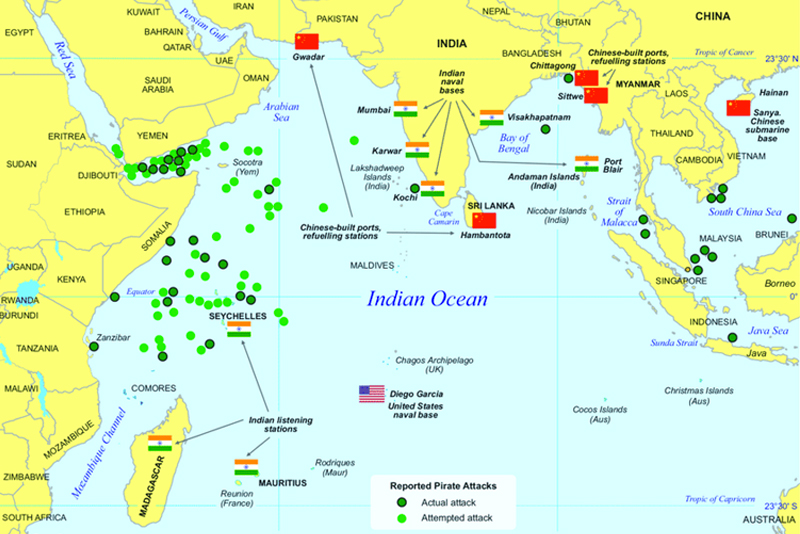December 5, 2019 amti.csis.org
India has begun to invest heavily, albeit quietly, in expanding its naval and air power across the Indian Ocean. The effort is driven by two factors: a desire to improve maritime domain awareness and maritime security throughout the vast region, and New Delhi’s growing anxieties about Chinese inroads in its strategic backyard. As Chinese naval forces operate more frequently in the Indian Ocean, military planners in New Delhi increasingly worry about a day when China could present a security threat not only on its Himalayan frontier but also from the sea. Meanwhile piracy, illegal fishing, and other maritime crimes remain serious concerns and potential sources of instability around the entire Indian Ocean rim. India is tackling these concerns along four tracks.
The Indian military is upgrading its naval, coast guard, and air capabilities in order to better monitor and project power farther from shore. Much of this work has been focused on the Lakshadweep archipelago off India’s west coast and the Andaman and Nicobar Islands in the east. India has also constructed a listening post in Madagascar to monitor traffic in the southwest Indian Ocean. Explore the map below for more details on these facilities along with India’s other efforts to expand its capabilities in the region.
A second line of effort is focused on boosting regional maritime domain awareness and creating a common operating picture through the work of the Indian Navy’s Information Fusion Centre for the Indian Ocean Region, or IFC-IOR. The center, which was launched in 2018, processes radar and sensor data from participating countries and offers the data to partners, including all members of the Indian Ocean Rim Association. India is helping smaller neighbors upgrade their radar arrays and feed them into the IFC-IOR. France recently became the first partner nation to post a liaison officer to the center.
New Delhi is also expanding military ties with other major players in the Indo-Pacific. This includes the Logistics Exchange Memorandum of Agreement signed with the United States in August 2016. That agreement facilitates each side’s access to the other’s military facilities for refueling and replenishment. It is widely expected to include the U.S. naval base at Diego Garcia, though no Indian vessels have so far made use of the facility. In 2018, New Delhi signed similar agreements to gain greater access to French facilities, especially its naval base on Réunion, and to Singapore’s Changi Naval Base. India inked a fourth logistics arrangement with South Korea in September 2019 and is reportedly close to finalizing similar deals with Australia, Japan, and Russia.
Finally, New Delhi has grown concerned about Chinese investments in important ports like Hambantota in Sri Lanka and Gwadar in Pakistan which grant Beijing a degree of leverage over the host countries and could serve a dual function as future logistics hubs for the Chinese military. In order to secure future access and cement its role as a regional leader, India is investing in the development of commercial ports and airports in the region. Some of these projects could provide the kind of access and logistics support that the Indian Navy has recently negotiated at the port of Duqm, Oman.

